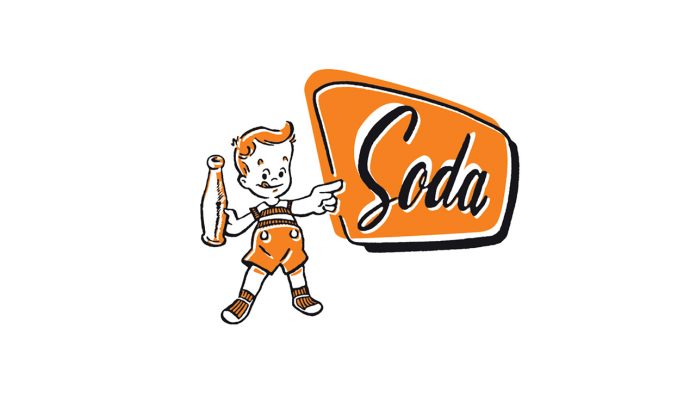The fizzy fluid with a long ‘therapeutic’ history.
In 1907 Victorian entomologist Charles Fraser travelled to northern Queensland. Yes, he observed the insects, but he had a second agenda. As a sufferer of ‘rhematic [sic] troubles’ Fraser spent several days lounging in the mineral-laced waters at Innot Hot Springs. Established in the late 1880s, it was one of the places to ‘take the waters’.1
Also known as ‘taking the cure’, taking the waters has a long, bubbly history. It began well before Fraser’s visit; before British captain RT Claridge’s call for the founding of ‘hydropathic’ establishments in Australia1; and even before Italian physician Michael Savanorola sang its praises in a 1440s treatise.2
The medical use of waters stretches back to classical antiquity with a kickstart from Greek physician Hippocrates. Soon the Romans followed suit, both bathing in and drinking from spring waters. Ruins of Roman baths in Baden, Switzerland and England’s Aquae Sulis demonstrate their enthusiasm.2
After a lull during the Middle Ages, the Renaissance revival of Hippocratic-style medicine repopularised hot springs. Physicians such as Dr Thomas Guidott in Somerset and chemist Robert Boyle studied their waters, identifying components, including iron and ‘vitriol’, or sulphuric acid.2,3
At a 1739 Royal Society meeting, clergyman Stephen Hales credited ‘Dr Chrouet’ with a detailed analysis of a specific mineral water. In 1713 Chrouet called the fizzy quality of water he distilled from a Belgian spa ‘aerial acid’.2,4
But it was Joseph Priestley who turned aerial acid into an industry. In 1772 he used vitriol, chalk, and water to create ‘an exceedingly pleasant sparkling water, resembling seltzer water’.2,3,5
Seltzer rises
How did Priestley know about ‘seltzer water’? Money.
While thinkers investigated the waters, spa owners flogged them.1–3 The most famous was in Niederselters, Germany. The town bottled its bubbly water in clay jugs, selling them worldwide. The name varied among countries, but the English version, ‘seltzer’, stuck, becoming generic for water infused with carbon dioxide.6–8
As seltzer’s popularity grew, so did efforts to build devices to produce it. British physician John Mervyn Nooth succeeded. In 1775, like Priestly, he presented to the Royal Society his apparatus for ‘impregnating water with fixed air’.3,9
The race is on
In 1809 American chemist Benjamin Silliman opened the first soda fountain.3,10 Then pharmacist Jacob Baur built spritzing equipment, selling it via his Liquid Carbonic Company, founded in 1888. This launched the soda fountain industry.3,10
But seltzer’s greatest evangelist was American pharmacist DeForest Saxe. He published his soda fountain recipes in 1898 and promoted profits they generated. Controversy raged. Were pharmacists dispensers of drinks or remedies?10 History decided. Building on Baur’s device, sodas were soon bottled and sold everywhere. People no longer had to go to the pharmacy for a soft drink. By World War II most pharmacists were back to their original trade.11
Or were they? Today, pharmacies sell more than medicines. Vitamins and other complementary medicines line the shelves. An echo from the past?
References
- Griggs P. ‘Taking the waters’: mineral springs, artesian bores and health tourism in Queensland, 1870–1950. Queensland Review 2013;20(2):157–173. At: https://researchonline.jcu.edu.au/30994/1/S1321816613000184a.pdf
- Homan PG. Aerial acid: a short history of artificial mineral waters. Paper presented at: 38th International Congress for the History of Pharmacy; 2007 September 19–22; Sevilla, Spain. At: https://idus.us.es/bitstream/handle/11441/39652/109.pdf?sequence=1
- Pawley E. Powerful effervescence. Science History Institute. 2008. At: www.sciencehistory.org/distillations/magazine/powerful-effervescence
- Hales S. Account of several experiments and observations on chalybeate or steel-waters: with some attempts to convey them to distant places, preserving their virtue to a greater degree than has hitherto been done. Philosophical Experiments 1739;3:125. At: https://books.google.com.au/books?id=f9MTAAAAQAAJ&printsec=frontcover&dq=%22Philosophical+Experiments%22,+volume+3&hl=en&sa=X&ved=2ahUKEwjh797b-pLqAhUF8HMBHZreAiEQ6AEwAXoECAUQAg#v=onepage&q=%22Philosophical%20Experiments%22%2C%20volume%203&f=false
- Priestley J. Directions for impregnating water with fixed air; in order to communicate to it the peculiar spirit and virtues of Pyrmont water, and other minerals water of a familiar nature. Printed for J. Johnson. London. 1772. At: https://todayinsci.com/P/Priestley_Joseph/PriestleyJoseph-MakingCarbonatedWater1772.htm
- Twiley N, Graber C. The medical origins of seltzer. The Atlantic. 2016. At: https://www.theatlantic.com/science/archive/2016/12/gettin-fizzy-with-it/510470/
- Ikin JI. Observations on the medicinal properties and uses of some of the principal mineral springs of Germany. Lancet 1836;(2):698. At: https://books.google.com.hk/books?id=1h06AQAAMAAJ&pg=PA698&lpg=PA698&dq=seltzer+medicinal+use+neiderselters&source=bl&ots=NFX0vnO67T&sig=ACfU3U0fG7KbQS3xVGcXS4IpyD_2J3nf9g&hl=en&sa=X&ved=2ahUKEwiglfuFzMbpAhWPyDgGHQvpArEQ6AEwAHoECAoQAQ#v=onepage&q=seltzer%20medicinal%20use%20neiderselters&f=false
- Spritzler F. Carbonated (sparkling) water: good or bad?. Healthline. 2019. At: www.healthline.com/nutrition/carbonated-water-good-or-bad
- Nooth JM. The description of an apparatus for impregnating water with fixed air; and of the manner of conducting that process. Phil Trans R Soc 1775;65:59–66. At: https://royalsocietypublishing.org/doi/10.1098/rstl.1775.0005
- Giasullo G, Freeman P. The soda fountain. Ten Speed Press. Berkeley. 2014. p. 8–11. At: https://books.google.com.au/books?id=tdAPAgAAQBAJ&newbks=0&printsec=frontcover&pg=PA5&dq=seltzer+and+chemists&hl=en&redir_esc=y#v=onepage&q=seltzer%20and%20chemists&f=true
- Berger K. Soda fountains & their pharmacist inventors. Pharmacy Times 2019 Feb 16. At: www.pharmacytimes.com/contributor/karen-berger/2019/02/soda-fountains–their-pharmacist-inventors



 Professor Margie Danchin[/caption]
Professor Margie Danchin[/caption]

 Dr Peter Tenni[/caption]
Dr Peter Tenni[/caption]
 How should we deprescribe gabapentinoids, according to the Maudsley Deprescribing Guidelines[/caption]
How should we deprescribe gabapentinoids, according to the Maudsley Deprescribing Guidelines[/caption]



 Pharmacists have always prescribed, but they have the potential to prescribe much more
Pharmacists have always prescribed, but they have the potential to prescribe much more






